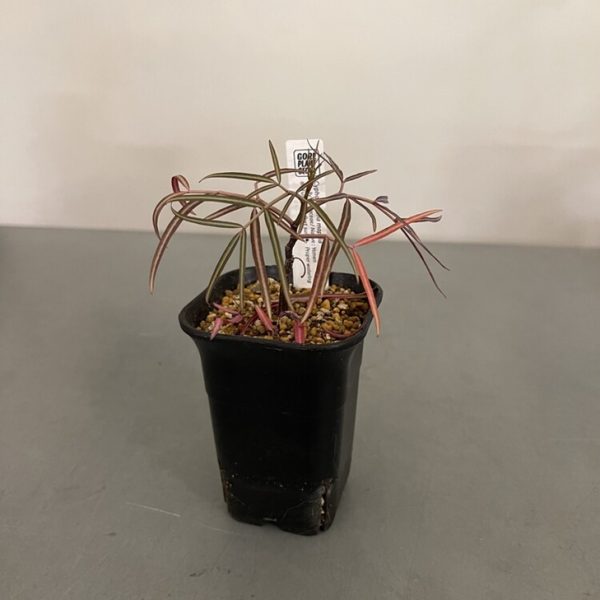Whatapp:
+278.3675.0634
Work Hours
Monday to Friday: 7AM - 7PM
Weekend: 10AM - 5PM

Original price was: $85.00.$70.00Current price is: $70.00.
Family: Vitaceae
Common Name: Elephant’s Foot Vine
Origin: Southern Africa (primarily Namibia and South Africa)
Cyphostemma mappia is a striking and somewhat unusual plant native to the arid regions of southern Africa. Known for its unique swollen, tuber-like base and vining growth habit, it is a member of the Vitaceae family, which includes other well-known climbing plants like grapes. The plant’s name, “Elephant’s Foot,” is derived from the distinctive, elephant-like shape of its thickened, swollen trunk-like base.
This plant is an excellent choice for collectors, gardeners, and bonsai enthusiasts looking for a low-maintenance yet visually captivating addition to their collection. It thrives in dry, well-drained conditions and can be grown both indoors and outdoors in suitable climates.
Size: Typically grows to about 1-2 meters in length as a vine, though the thickened base (caudex) can expand to 20-30 cm in diameter as the plant matures.
Foliage: The leaves are large, palmately-lobed, and can reach 10-20 cm long. They are a rich green, creating a lush contrast against the woody, swollen base.
Flowers: Small, inconspicuous, and not typically the focal point of the plant. When they do bloom, they appear in clusters, often in late summer to early fall.
Growth Habit: A deciduous vine that may lose its leaves in the colder months or during a dry season, only to sprout again when the conditions improve.
Trunk (Caudex): The most distinctive feature of Cyphostemma mappia is its thickened caudex, which looks similar to an elephant’s foot and stores water to survive in arid conditions.
| Factor | Requirement |
|---|---|
| Light | Full sun or bright indirect light |
| Temperature | Prefers warm temperatures (15-30°C / 59-86°F) |
| Watering | Water thoroughly but allow the soil to dry out completely between waterings. Drought-tolerant once established. |
| Soil | Well-draining, sandy or loamy soil, preferably with some organic matter mixed in |
| Humidity | Prefers dry conditions, making it ideal for low-humidity areas or indoors |
| Fertilization | Light fertilization with a balanced fertilizer during the growing season (spring to summer) |
Watering: Be careful not to overwater, as this plant is susceptible to root rot. Ensure that the soil is dry before watering again, especially in cooler months.
Temperature: Cyphostemma mappia thrives in warm temperatures. If growing indoors, place it in a sunny window or under grow lights during the winter months.
Growth Habit: While it can be grown as a climbing vine, the plant can also be trained into a more compact shrub-like form, depending on your preference.
Winter Care: It may go dormant in the colder months, shedding its leaves. Reduce watering during this period to avoid overwatering while it is in dormancy.
Size: Plants are sold as small to medium-sized specimens, typically 10-20 cm in height.
Shipping: Carefully packaged to ensure safe arrival, whether the plant is potted or bare-rooted. All plants are inspected for quality and health before shipping.
Packaging Materials: Moisture-retaining packing materials to protect the plant during transit.
Cyphostemma mappia is not currently listed as endangered, but as a unique species, it is important to source plants from reputable, ethical nurseries that follow sustainable cultivation practices. This plant is popular among collectors, but it’s crucial to ensure that it is legally sourced.
Homi –
Purus sit amet volutpat consequat mauris nunc congue nisi vitae. Pretium fusce id velit ut tortor pretium viverra. Hac habitasse platea dictumst quisque sagittis purus sit amet.